Gingko(Ichou/銀杏) is also famous as a typical autumn plant in Japan.
There are many famous places in Japan where you can see rows of gingko trees.
Gingko(Ichou/銀杏) is also planted as a sacred tree in shrines and other places of worship.
I would like to introduce you to the Gingko pattern(Ichou Mon/銀杏文).
What is Gingko (銀杏/Ichou)?
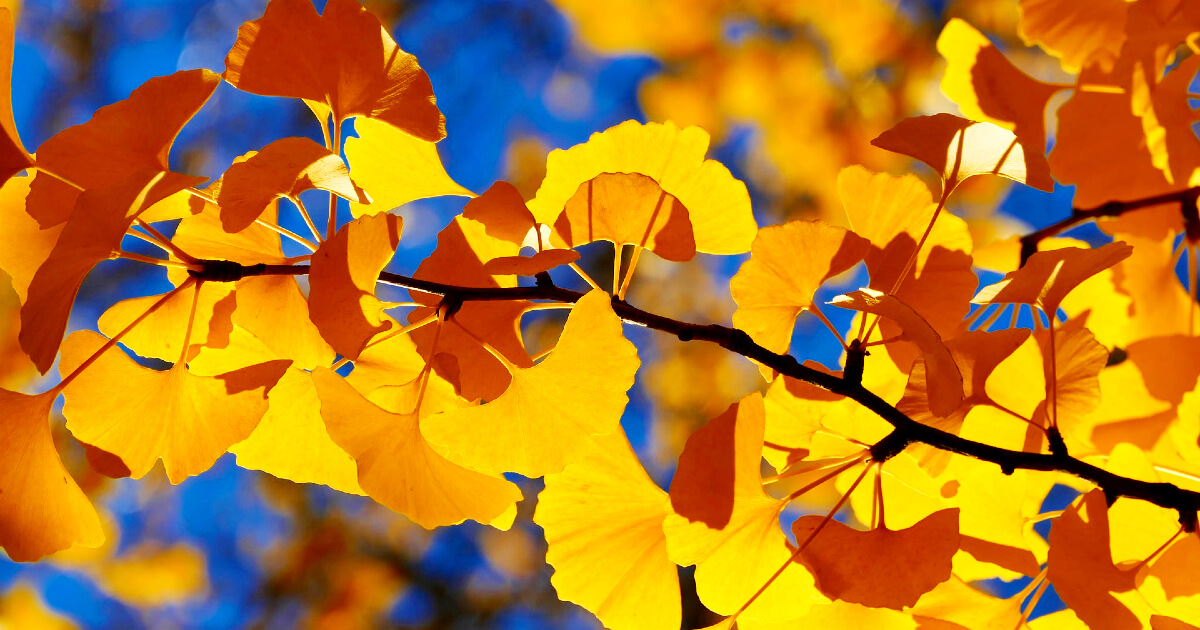
Ginkgo(Ichou/銀杏) is a plant called a “living fossil”, which has existed for about 200 million years.
It is thought to have grown wild all over the world in prehistoric times, but only one species, native to China, survives.
It is believed to have been introduced to Japan before the Muromachi period (1336-1568).
Ginkgo(Ichou/銀杏) is a deciduous tree native to China, which can grow up to 30 metres tall. The leaves turn golden in late autumn and fall off in the winter.
It is a dioecious plant, with male and female flowers of different shapes and sizes, which bloom in spring when the new shoots are sprouting.
The male flowers are borne in clusters and the female flowers have a bare embryo at the end of the stalk.
The female plants give off an odour around the time the ginkgo trees are put up, so most of the trees planted along the roadsides are said to be male.
Gingko is written by the Chinese character “銀杏”, “公孫樹” and “鴨脚樹”, all of which are read as “Ichou(いちょう)”.
It is said that “公孫樹” means that it takes until the grandchildren’s generation from sowing the seed to bearing the fruit.
The name “Ginkgo(銀杏/Ginnan)” was given to the fruit, which looks like a small apricot(杏子), because it is pure white like silver.
In Japan, the name “Ginkgo(銀杏/Ichou)” is said to have originated from one of the Chinese names (there are several Chinese names), “Yachao(鴨脚/ヤーチャオ)”, because the shape of the leaves of the Ginkgo(銀杏/Ichou) resembles the legs of a duck with a paddle.
Incidentally, in Japan, the word “Ginkgo(銀杏)” is read both as “icho(いちょう)” and “ginnan(ぎんなん)”.
It is said that this is because the Chinese reading of “Ginkgo tree” came to be read as “Icho-no-ki(Ginkgo tree/銀杏の木)”, and only when the fruit was produced, “Ginkgo” was read phonetically as “Ginnan(銀杏/ぎんなん)” to distinguish it.
In addition, the genus name Ginkgo is also said to have originated from the Chinese name “Ginkgo(銀杏)”.
The language of the ginkgo is “longevity”, “majesty” and “repose”.
Ginkgo(銀杏/Ginnan) trees grow large and live a long life, so the word “longevity” was given to them.
Ginkgo(銀杏/Ginnan) trees are often used as sacred trees in shrines and temples, so the words ‘solemnity’ and ‘requiem’ are also used.
If you want to give a gift to an elderly person, it would be wonderful to give a ginkgo as a congratulation for a happy life.
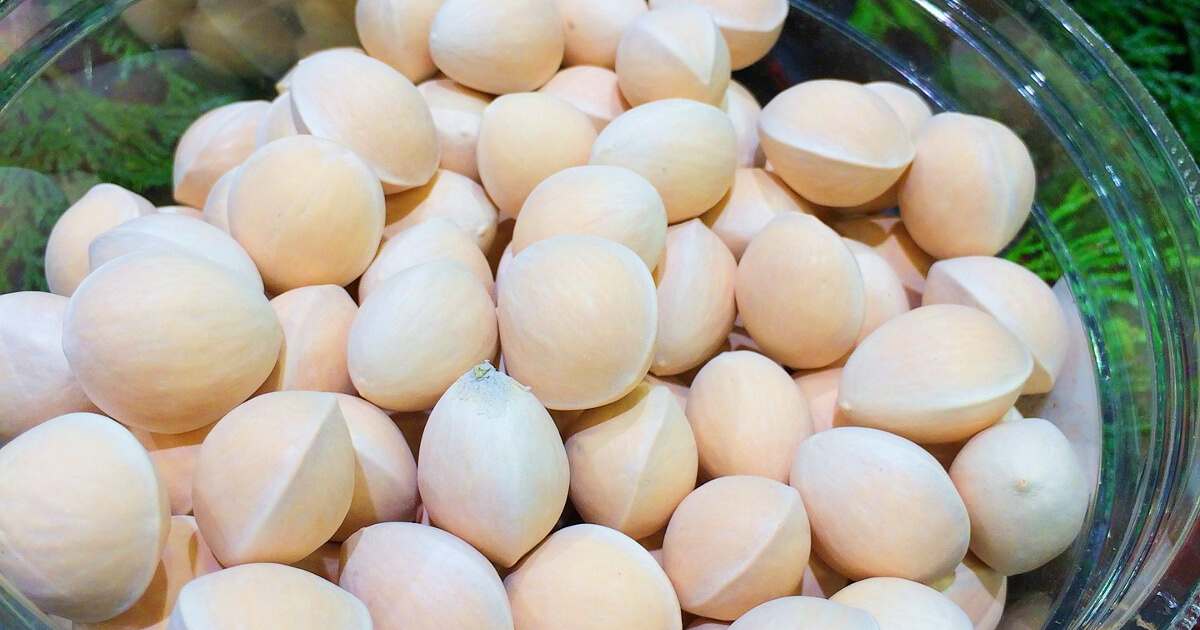
As an aside, I would like to talk about the ginkgo nuts that grow on the ginkgo trees.
Ginkgo nuts are rich in minerals such as potassium, magnesium, phosphorus and iron, which are essential for building bones, as well as containing starch, carotene and vitamin C.
Ginkgo biloba has also been used as a folk remedy for coughs and phlegm in Japan and China since ancient times. However, ginkgo nuts contain a poisonous substance called methylbilidoxine, which interferes with the action of vitamin B6, so be careful when eating them, especially if you are an infant with a weak detoxification capacity.
Adults, be careful not to eat too much!
About Ginkgo Pattern(銀杏文/Ichou Mon)
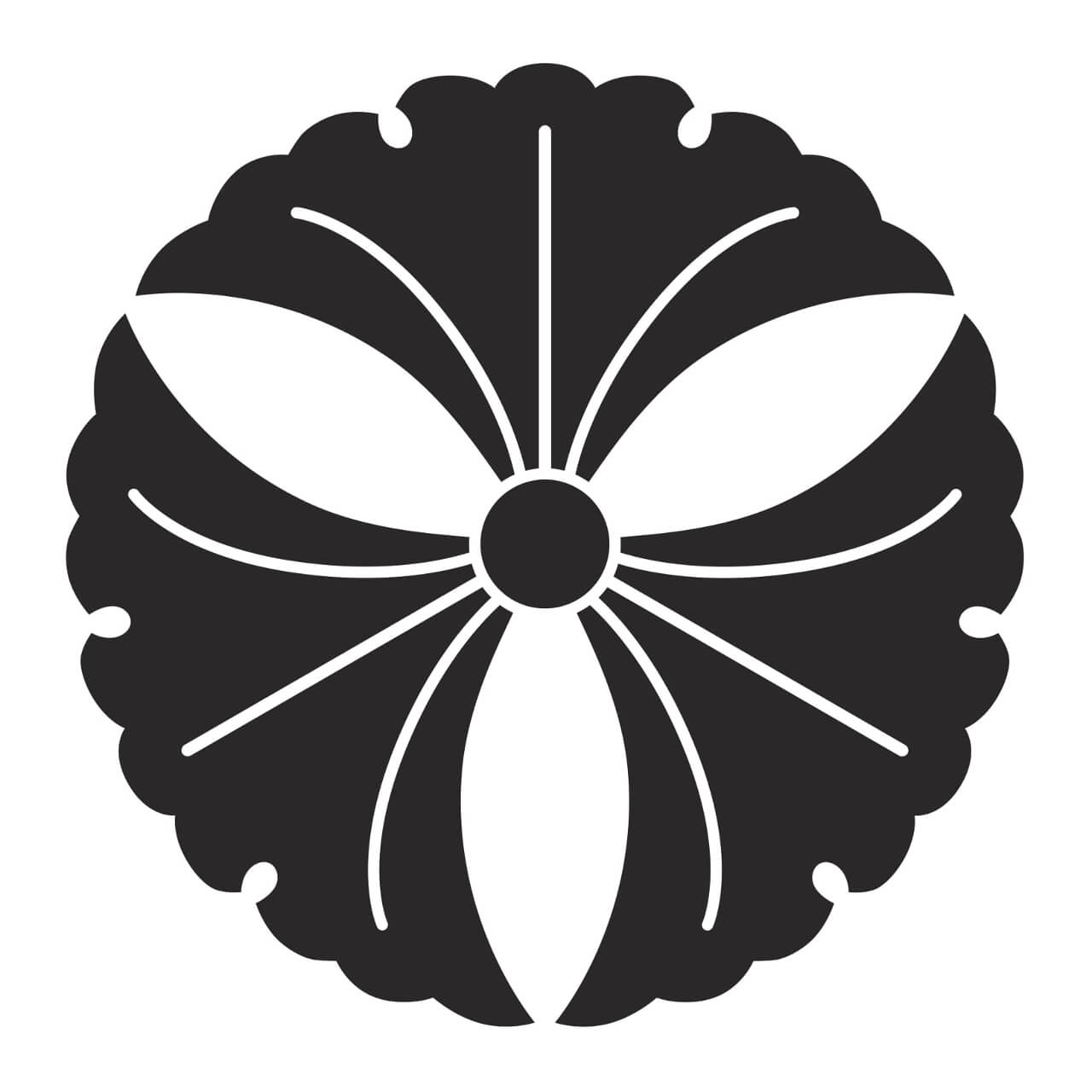 Family crest: three gingkoes
Family crest: three gingkoes
家紋:三つ銀杏(みついちょう)
Photo:フリー素材サイト発光大王堂
The longevity and fire resistance of the tree symbolise its vitality. The shape of the leaves, which spread out at the end of the tree, is a symbol of good luck, wealth and prosperity. When the tree becomes old, the aerial roots resemble breasts, which is good for raising children and praying for breast-feeding. The tree is also dioecious, which is good for good luck and marital fertility. The ginkgo is also known as a sacred tree for blessings from the gods and Buddha. Ginkgo is also associated with the joy of welcoming guests from other countries because of the word “Icho”. The ginkgo is also used as a family crest, and there are many known crests, such as the one ginkgo on the middle ring, the three ginkgo, and the two sword ginkgo combined with a sword.
Design using Ginkgo Pattern(銀杏文/Ichou Mon)
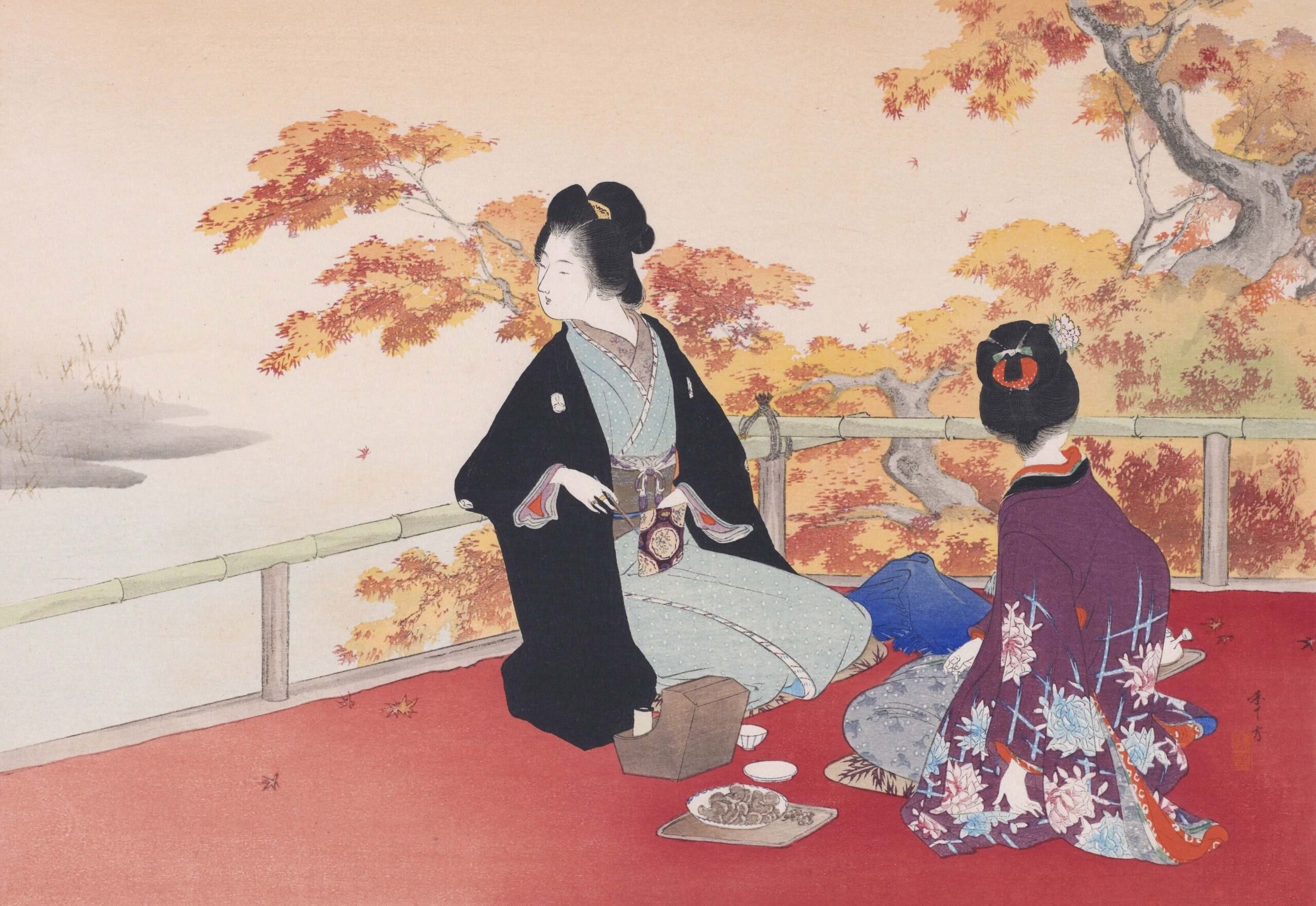
Mizuno Toshikata, “Mitsui Ko, Tokyo no Nishiki: Autumn Leaves Hunting” (1905-1906)
水野年方 「三井好 都のにしき 紅葉狩」 (1905-1906)
Photo:パブリックドメインQ:著作権フリー画像素材集
この投稿をInstagramで見る
この投稿をInstagramで見る

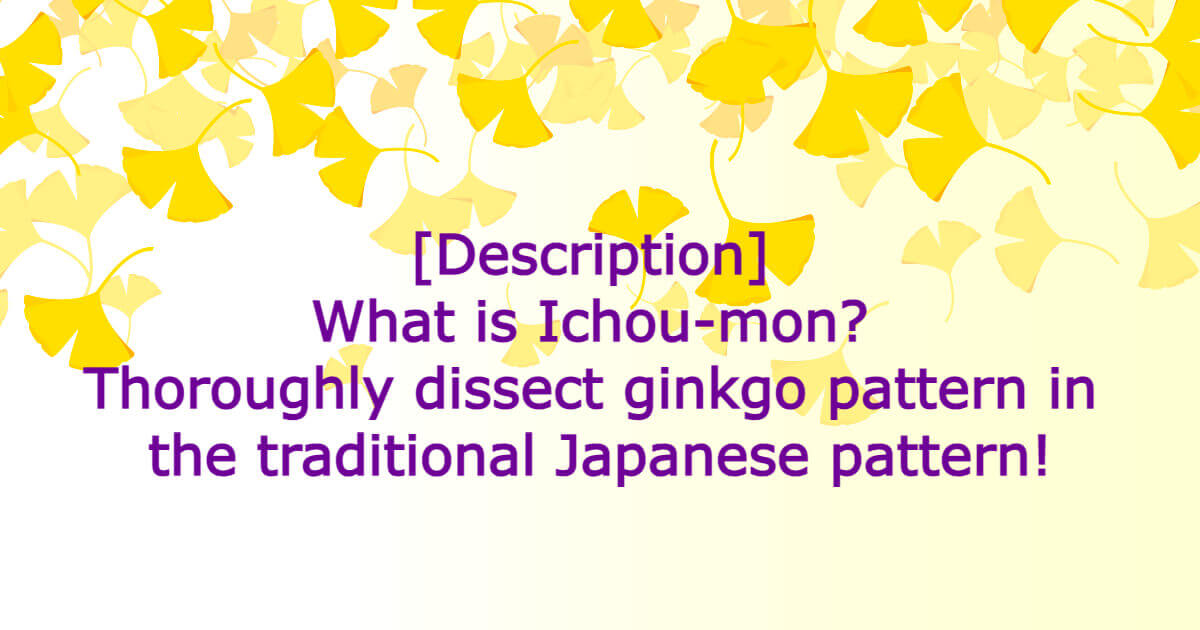



コメント